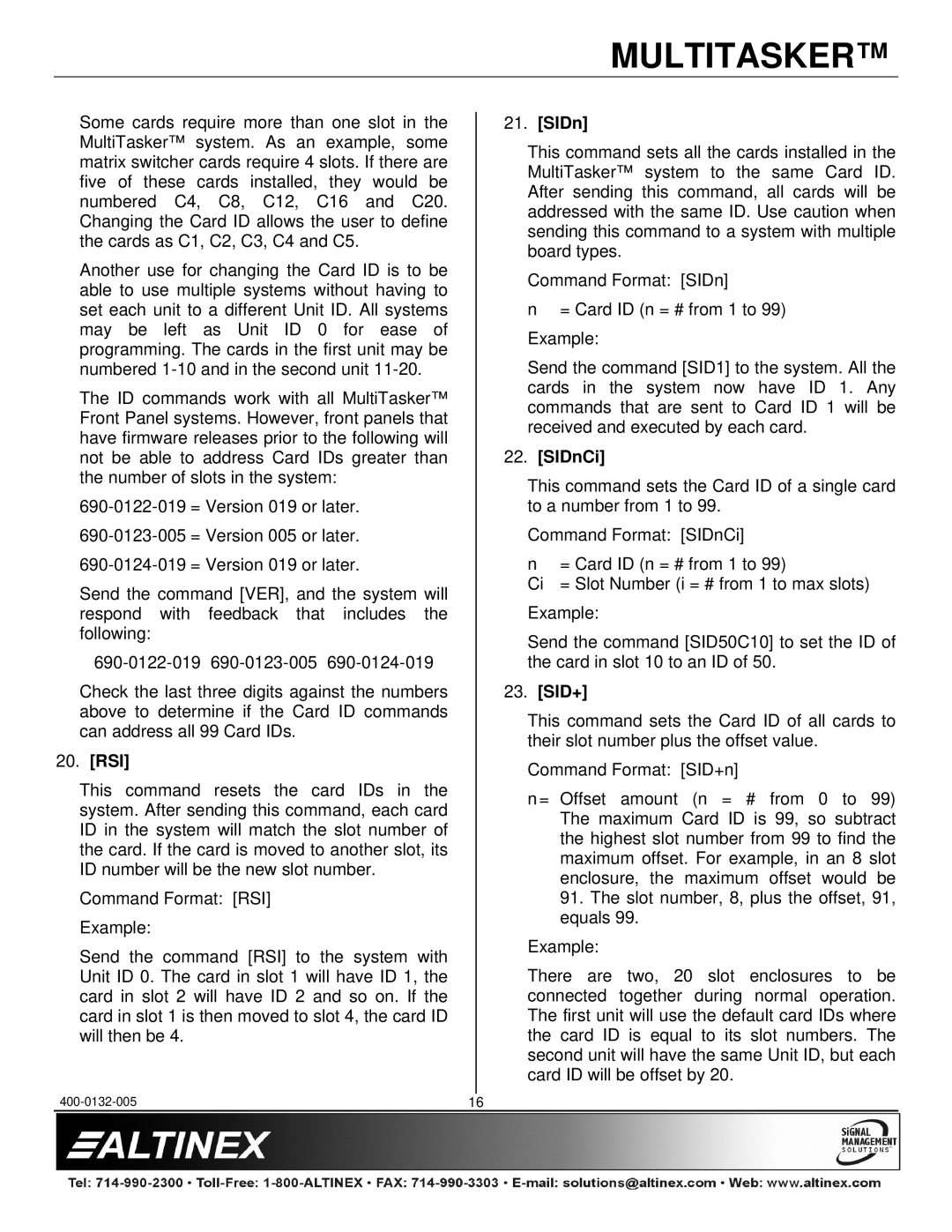
MULTITASKER™
Some cards require more than one slot in the MultiTasker™ system. As an example, some matrix switcher cards require 4 slots. If there are five of these cards installed, they would be numbered C4, C8, C12, C16 and C20. Changing the Card ID allows the user to define the cards as C1, C2, C3, C4 and C5.
Another use for changing the Card ID is to be able to use multiple systems without having to set each unit to a different Unit ID. All systems may be left as Unit ID 0 for ease of programming. The cards in the first unit may be numbered
The ID commands work with all MultiTasker™ Front Panel systems. However, front panels that have firmware releases prior to the following will not be able to address Card IDs greater than the number of slots in the system:
Send the command [VER], and the system will respond with feedback that includes the following:
Check the last three digits against the numbers above to determine if the Card ID commands can address all 99 Card IDs.
20.[RSI]
This command resets the card IDs in the system. After sending this command, each card ID in the system will match the slot number of the card. If the card is moved to another slot, its ID number will be the new slot number.
Command Format: [RSI]
Example:
Send the command [RSI] to the system with Unit ID 0. The card in slot 1 will have ID 1, the card in slot 2 will have ID 2 and so on. If the card in slot 1 is then moved to slot 4, the card ID will then be 4.
21.[SIDn]
This command sets all the cards installed in the MultiTasker™ system to the same Card ID. After sending this command, all cards will be addressed with the same ID. Use caution when sending this command to a system with multiple board types.
Command Format: [SIDn]
n= Card ID (n = # from 1 to 99) Example:
Send the command [SID1] to the system. All the cards in the system now have ID 1. Any commands that are sent to Card ID 1 will be received and executed by each card.
22.[SIDnCi]
This command sets the Card ID of a single card to a number from 1 to 99.
Command Format: [SIDnCi]
n | = Card ID (n = # from 1 to 99) |
Ci | = Slot Number (i = # from 1 to max slots) |
Example:
Send the command [SID50C10] to set the ID of the card in slot 10 to an ID of 50.
23.[SID+]
This command sets the Card ID of all cards to their slot number plus the offset value.
Command Format: [SID+n]
n = Offset amount (n = # from 0 to 99) The maximum Card ID is 99, so subtract the highest slot number from 99 to find the maximum offset. For example, in an 8 slot enclosure, the maximum offset would be
91.The slot number, 8, plus the offset, 91, equals 99.
Example:
There are two, 20 slot enclosures to be connected together during normal operation. The first unit will use the default card IDs where the card ID is equal to its slot numbers. The second unit will have the same Unit ID, but each card ID will be offset by 20.
16 |
